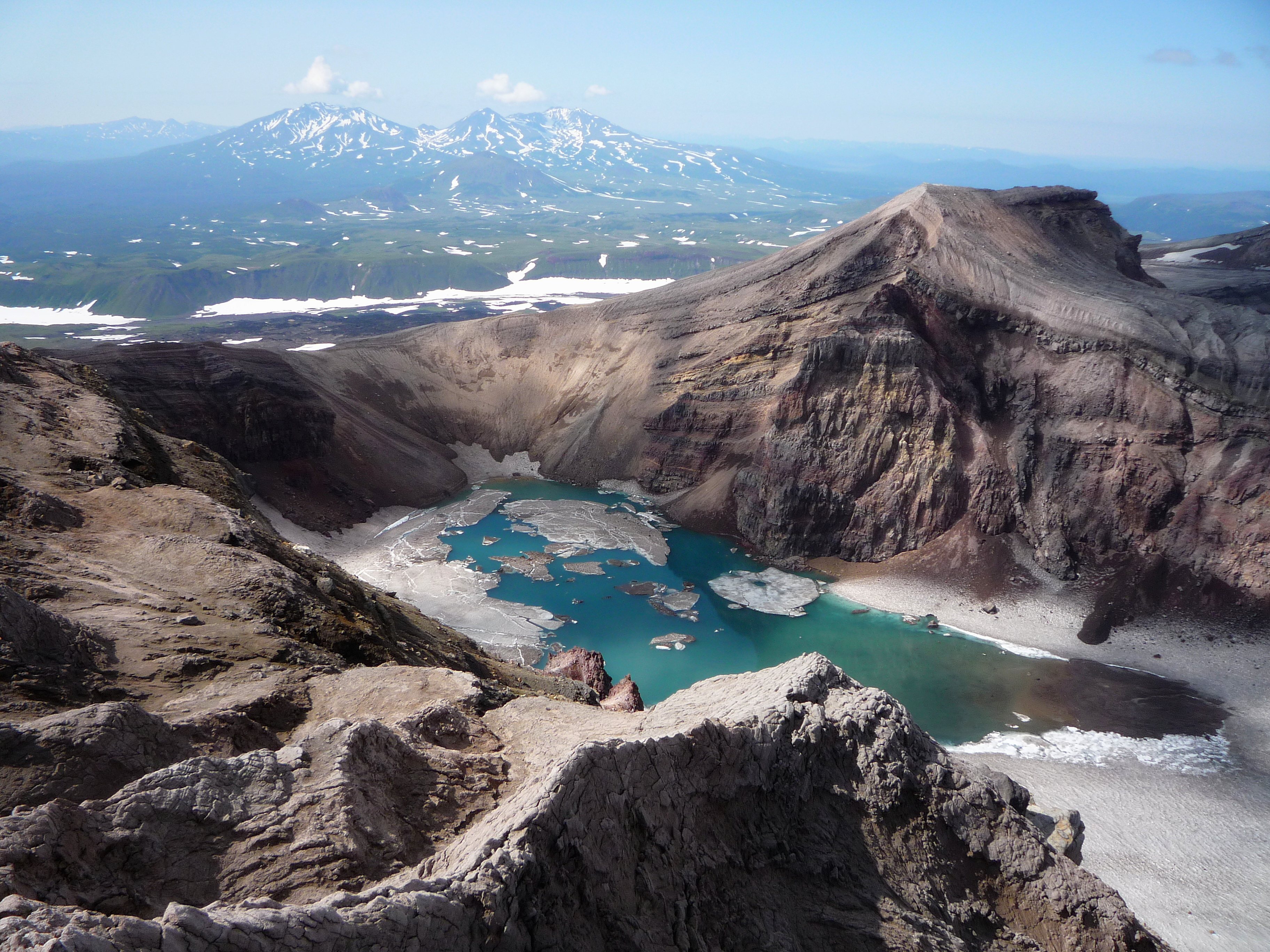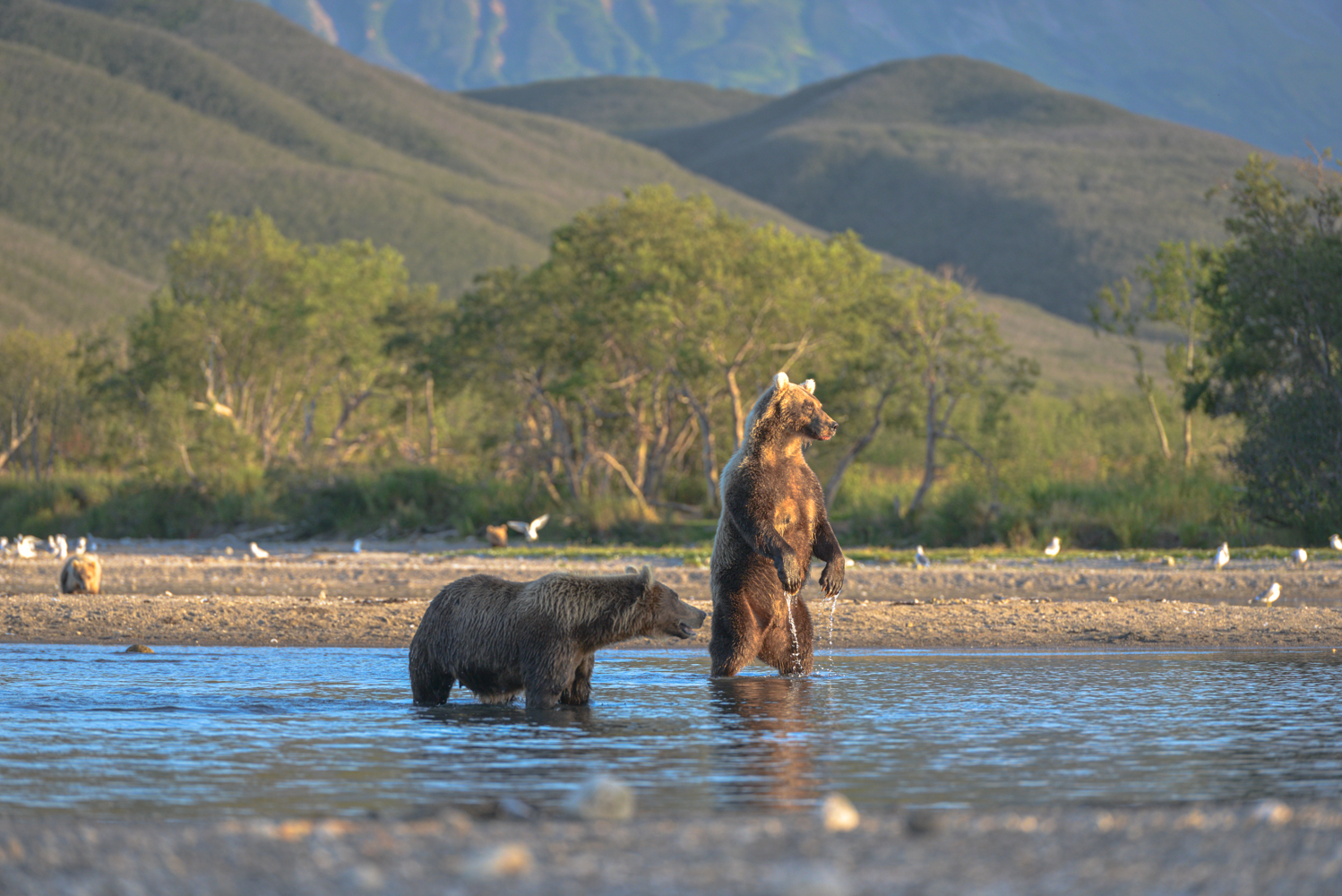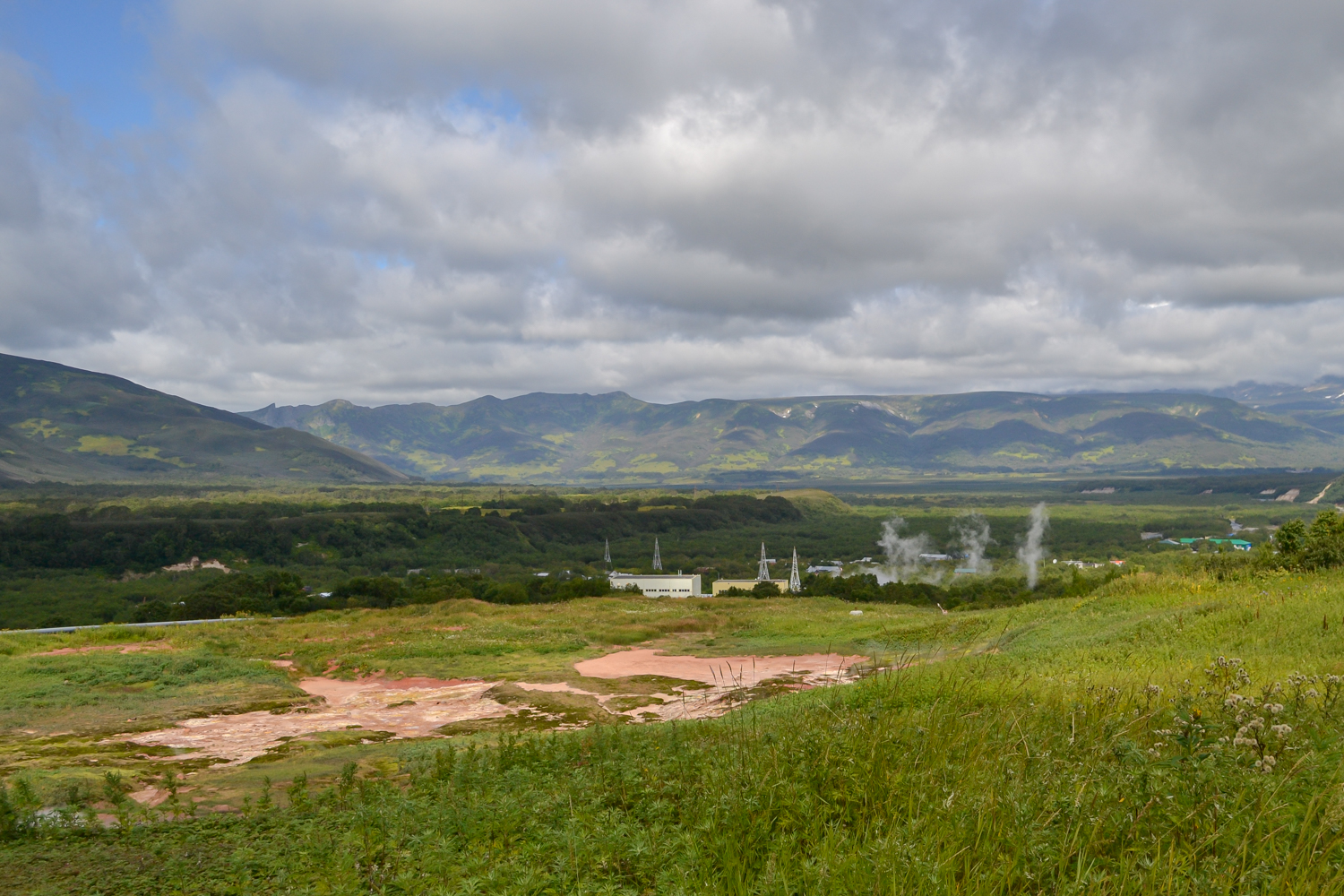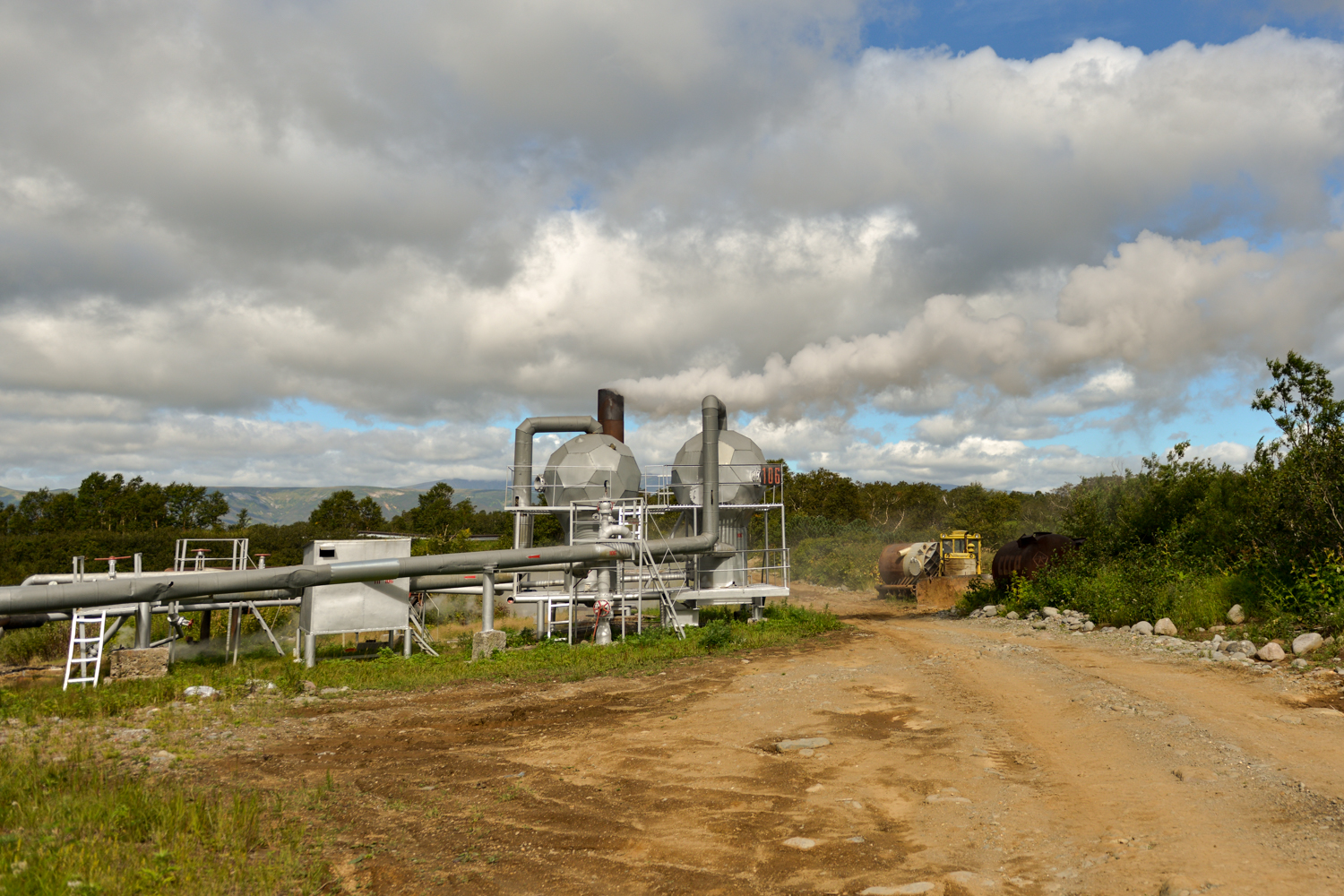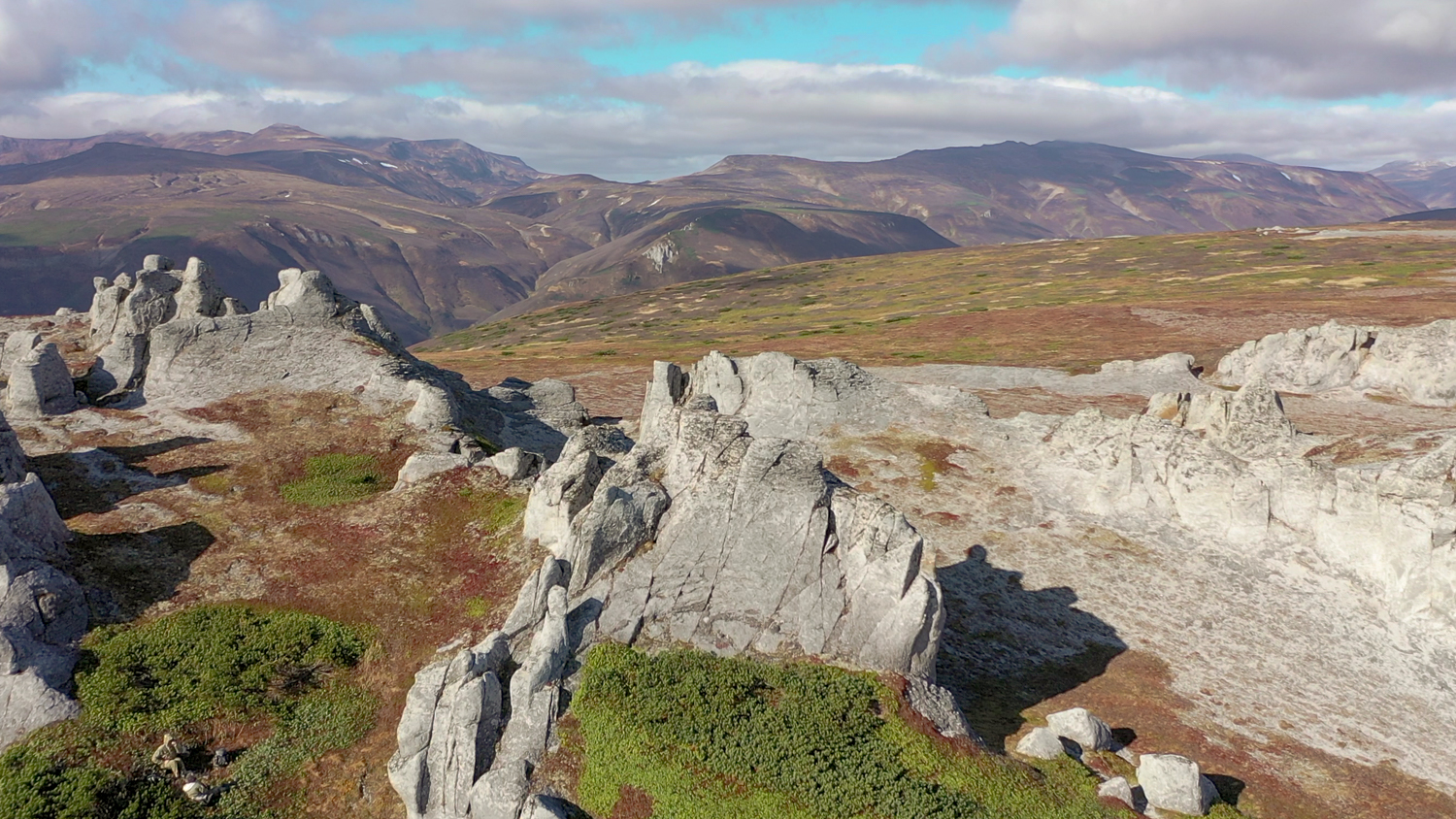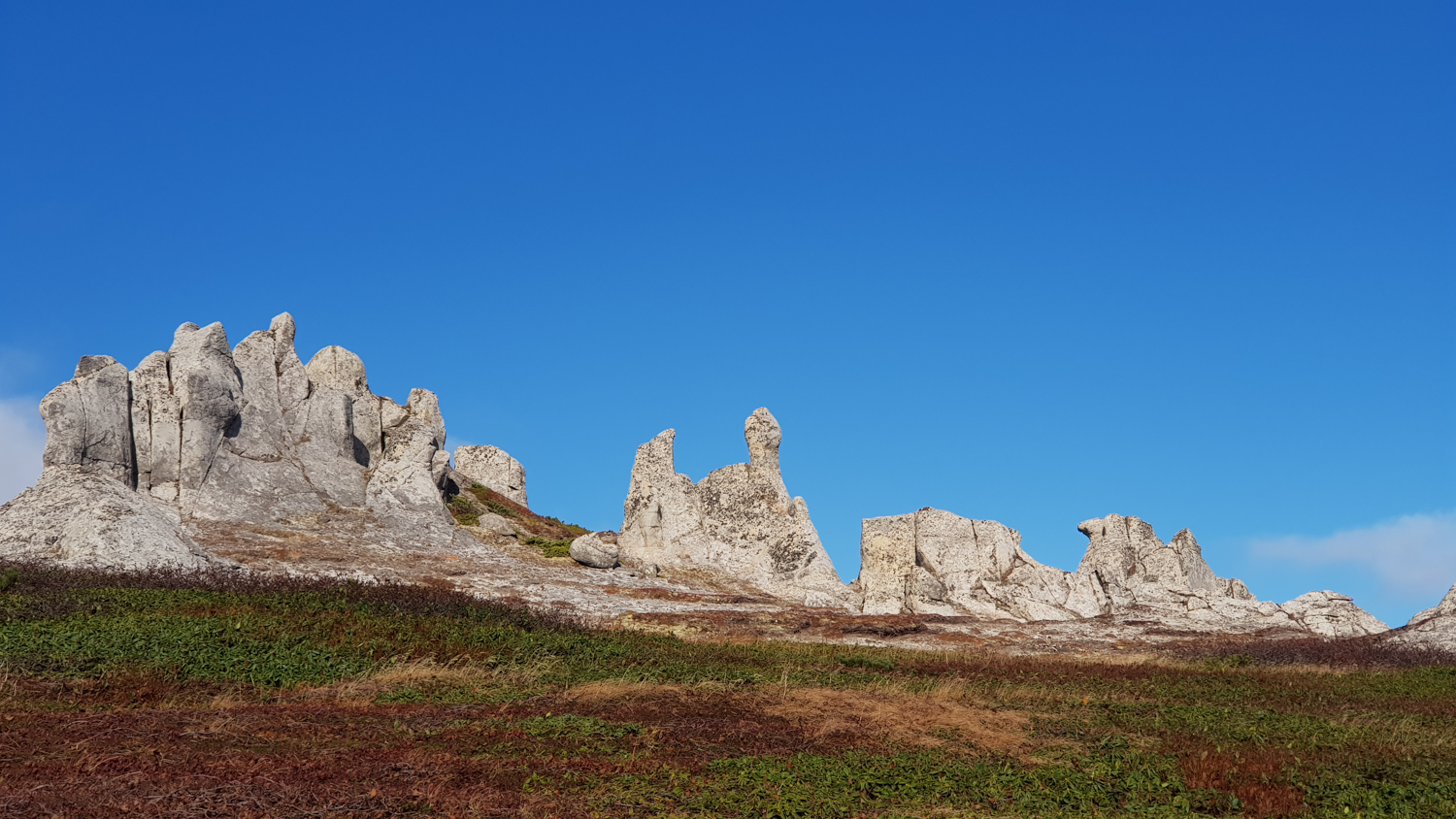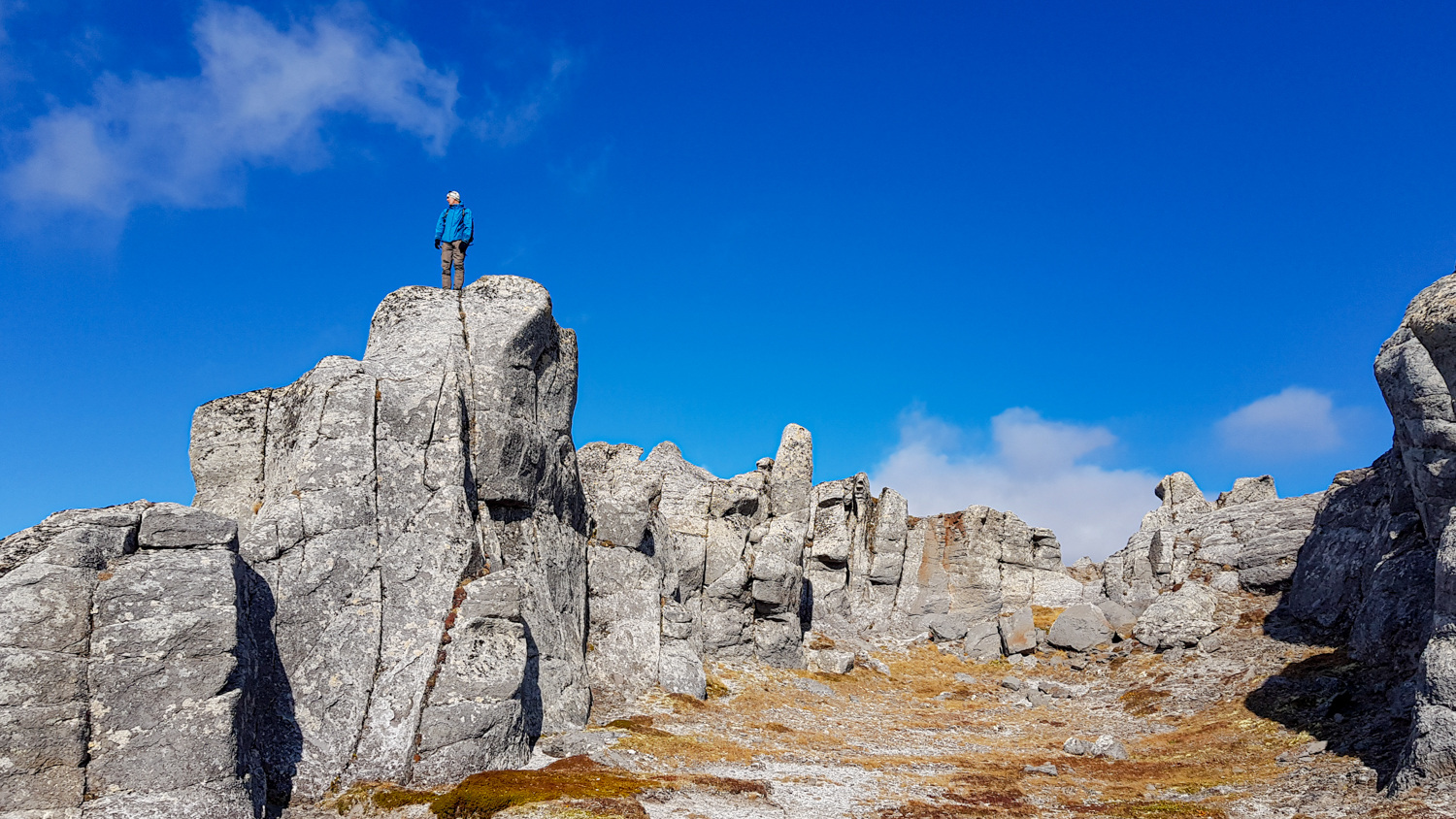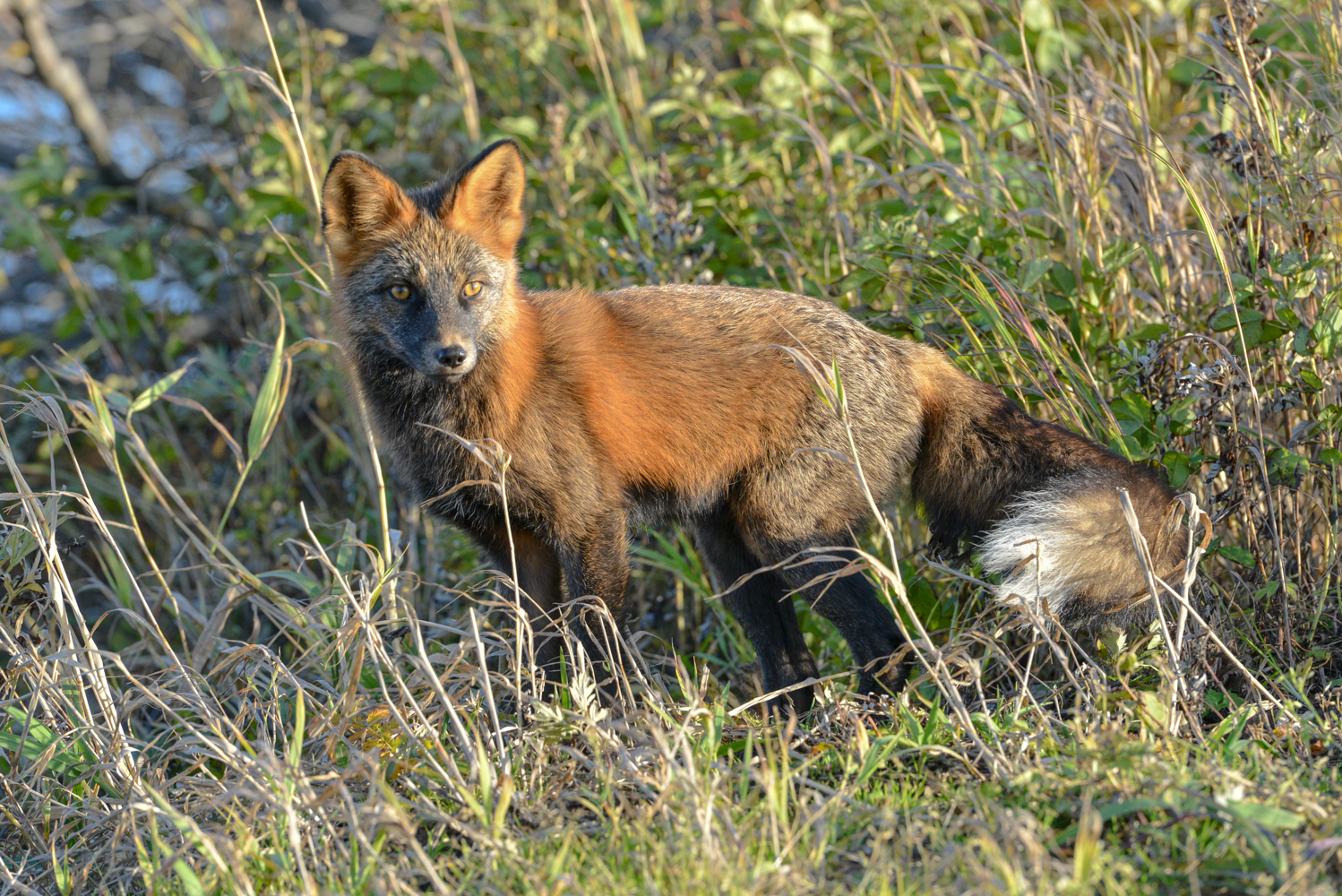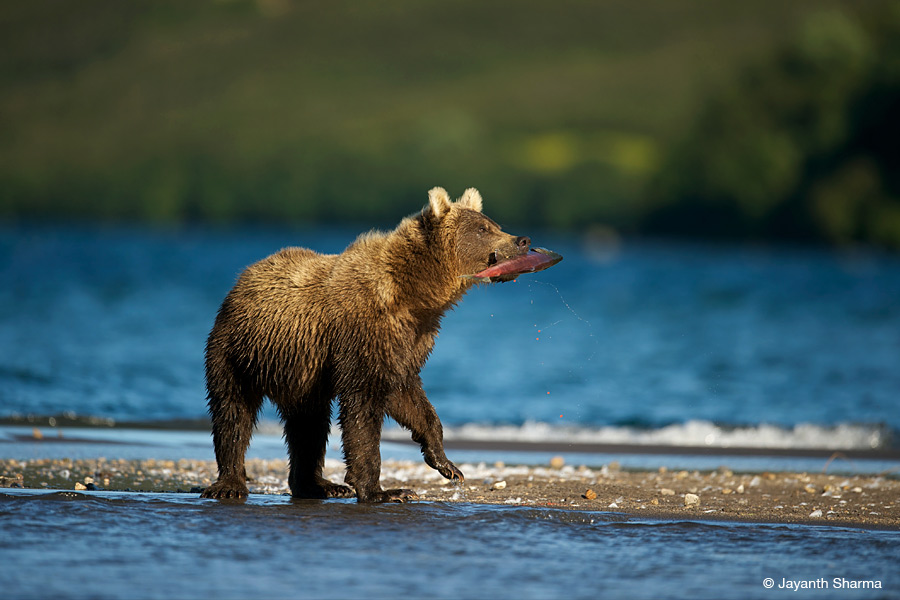Walking Grades and Fitness
Grading is a somewhat difficult topic as much depends on the individuals own perception of his or her abilities. The following is intended as a general guide to our grading system. The levels of difficulty are divided into categories B/C/D. Although the trekking is not at great altitude, it occasionally traverses rough terrain and involves some long days and steep climbs.
Grade B walks (Moderate): are for those of any fitness level who are able to traverse moderately hilly terrain. Walking is limited to day excursions from a central location to which you will be transported. These day hikes are normally no more than 6 hours in duration and all walking may be done with no backpack or with a light day pack.
Grade C walks (Strenuous): are for the more serious hill walker and a higher level of physical fitness is required. However, no special physical preparations should be needed. Walking days are normally 6-8 hrs and may involve up to 900m of ascent and descent. You should be prepared for several consecutive days of walking, sometimes at higher altitudes, so stamina is important. However, occasionally rest days in the course of the trek will be included.
Grade D walks (Tough): require that you are very fit and previous trekking experience is strongly recommended. Grade D includes long walks with steep uphill and downhill gradients. There will be some hiking at high altitudes (up to 4000m) and corresponding cold weather conditions. These treks will also involve several long days (up to 8-9 hours) of trekking continuously without a rest day. |
#103. Kurilskoye Lake and Western Kamchatka: bears, Okhotsk sea shore and 3 active volcanoes. NO TENTS TRIP!
|
Departure 2024:
September 10th 
Grade B/C, no tents trip!
Kamchatka peninsula is an isolated, undeveloped, stunningly beautiful area with noble ranges of extinct and active volcanoes, pearls of crystal-clear blue lakes and acidic ones of inconceivable colors and shades from orange to obsidian-black; with river ribbons and emerald-green valleys, crossed by lilac-purple threads of blossoming willow-herb. 1200 km long from North to South and nearly 600 km across in its widest part… How to embrace the boundless? We suggest you to get the maximum possible experience out of this 15-days trip perceiving all the variety of Kamchatka's awesome landscapes in this extremely eventful and perfectly arranged tour.
This trip includes the most interesting active volcanoes and the great amount of thermal manifestation following them, though their enormous diversity can easily leave behind the world-famous Yellowstone and New-Zealand parks; a group of balneotherapeutic health resorts, where you can rest and relax after busy and eventful day; a visit to Kurilskoye lake where you can get acquainted with Kamchatka brown bears, their habits and manners and watch the spawning salmon; a tour to the Geothermal power station to investigate its working processes and picturesque surroundings; river and sea fishing; watching bird colonies and rookeries of sea-lions at Kekurniy cape. 15 days full of events and experiences with no nights in tents!
15 DAY ITINERARY
Day 1. Arrival in Petropavlovsk Kamchatsky. Transfer to the "Petropavlovsk" hotel and welcome dinner. Briefing and time to prepare for the tour. Welcome dinner in a restaurant.
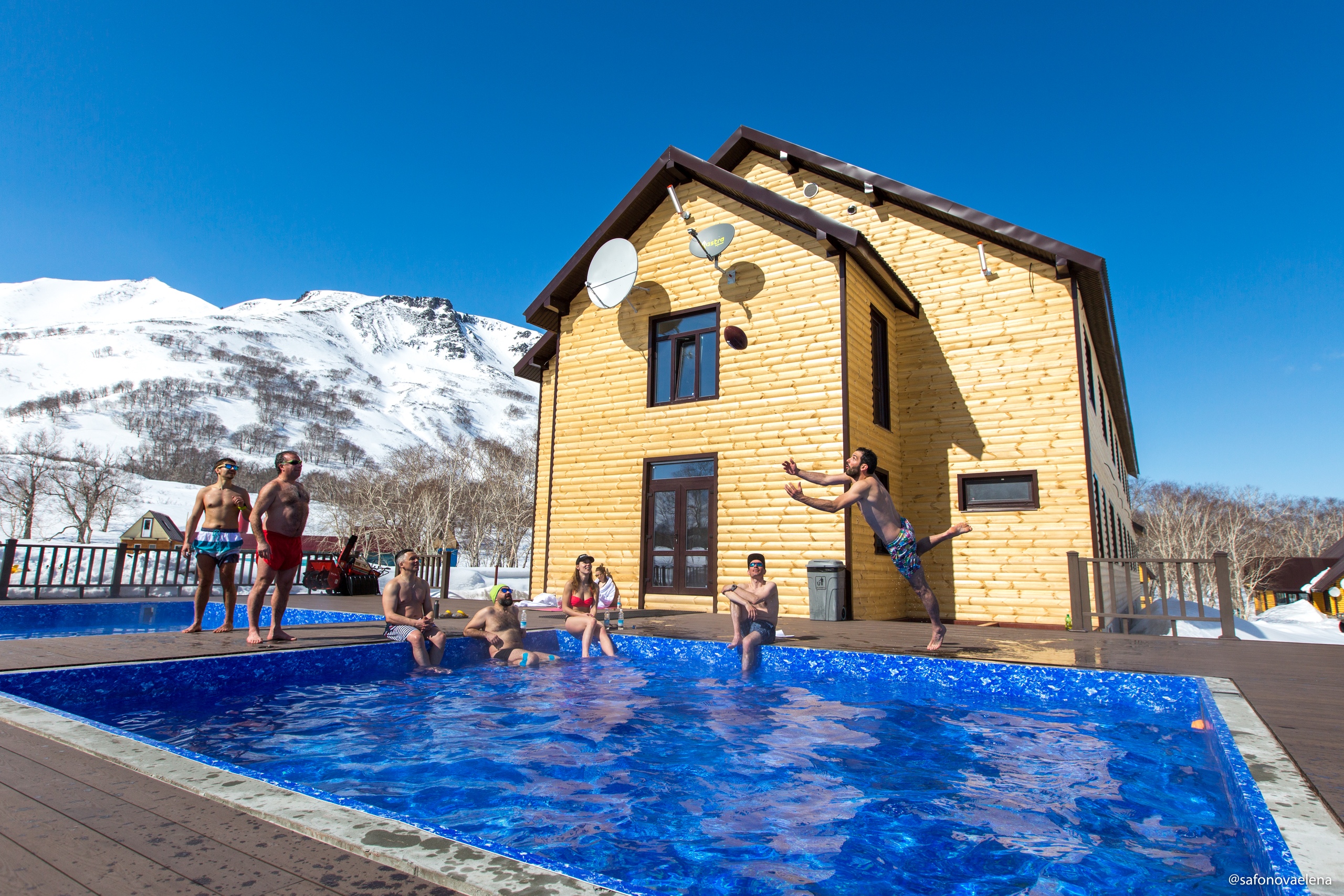 Day 2. Today we will drive with the all-terrain bus in the direction of Mutnovsky Volcano plateau and settle a bit more than half-way in a picturesque spot called Karimshina Hot springs. It is a quite new small resort, located in a spectacular mountainous area. The way there won’t take more than 2-2,5 hours, so there will be plenty of time to roam about and relax in the swimming pools with thermal water. Overnight in the Resort. Day 2. Today we will drive with the all-terrain bus in the direction of Mutnovsky Volcano plateau and settle a bit more than half-way in a picturesque spot called Karimshina Hot springs. It is a quite new small resort, located in a spectacular mountainous area. The way there won’t take more than 2-2,5 hours, so there will be plenty of time to roam about and relax in the swimming pools with thermal water. Overnight in the Resort.
Day 3. Day trip to Gorely Volcano and Lava Caves.
After breakfast, we will drive to the plateau of Mutnovsky and Gorely volcanoes (2-2,5 hours, it depends on the road condition) and stop at the foot of Gorely Volcano. The ascend starts here.
Gorely Volcano.
This shield volcano with vast flattened caldera has 11 craters. We are going to visit the two most interesting ones.
The first large crater contains a cold dark-blue lake about 100 m below; its surface has ice floes from a small glacier on its internal slope. The walls of all the craters expose profiles through thick sequences of lava flows with a limited component of interbedded pyroclastics. Continue beyond it to a broad shelf that extends inside the very large old central crater. Picnic lunch on the shelf. Just ahead, there is a sudden, unguarded, vertical descent into the active crater. It is about 100 m deep and, on its bottom, you can trace the series of active fumaroles and solfataras. A vivid smell of sulphur and other poisonous elements can be easily distinguished in the air. After exploring the 2nd crater, we will return to the bus and drive to the Lava Caves.
Lava Caves. The lava caves at the territory of Gorely volcano are situated to the north of it at a not very big area of ancient lava flow about 2000 years old. Volcanologists have mapped here 14 caves, the longest is about 140 meters and the shortest – 16 meters. Relatively high and wide grots are the characteristics of the major part of Gorely’s caves due to the fact that they are pretty old and had been destroyed in the course of time in many parts of the flow. All caves of Gorely volcano are concentrated on one part of single lava flow.
Lava cave can be formed as a result of surface solidification of a lava flow during the last stages of its activity. A frozen crust may form over still mobile and actively flowing liquid rock as a result of surface cooling. A dwindling supply of lava may then cause the molten material to drain out from under this crust and leave long cylindrical tunnels. Drive back to the Resort. Dinner and rest.
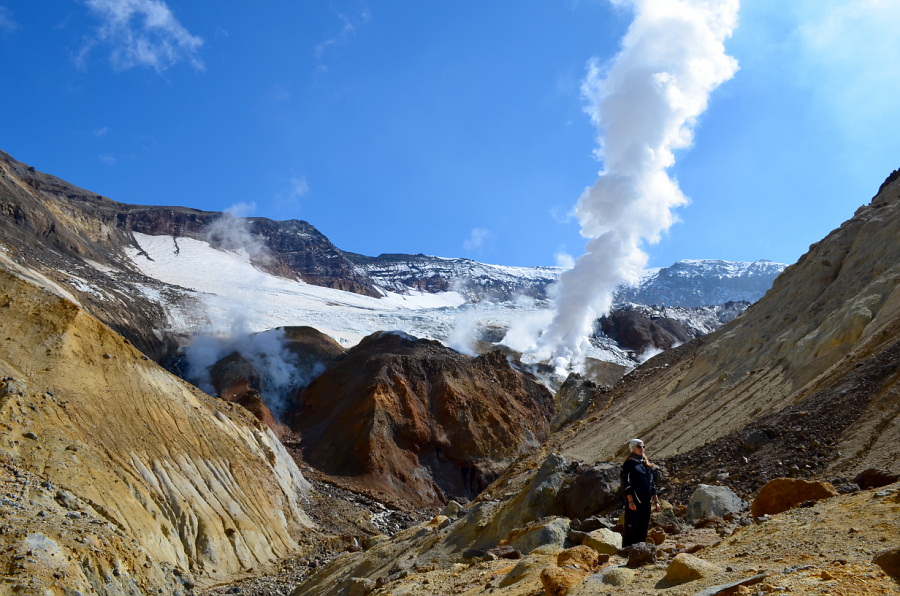 Day 4. Day trip to the crater of Mutnovsky Volcano or to Dachniye Hot Springs (depends on the time of year and road condition). Day 4. Day trip to the crater of Mutnovsky Volcano or to Dachniye Hot Springs (depends on the time of year and road condition).
After breakfast, we will drive to the plateau of Mutnovsky and Gorely volcanoes (2-2,5 hours depends on the road condition).
Mutnovsky Volcano.
The crater of Mutnovsky volcano is a truly unique phenomenon in the World. You will have an opportunity not only to take a glance inside of the active crater from its rim, but to stroll on its particular bottom. Everything is boiling and bubbling under your feet, so the excursion is organized only along a singular fixed trail. Fumaroles, solfataras, mud pots, multi-colored acidic lakes, the smell of sulphur and clouds of steam and smoke – a real Journey to the Centre of the Earth! The slopes of the crater are covered with inlet of different minerals condensate from the gasses coming out through the thermal vents all around. The caldera's eastern glacier of bright blue in its upper part, lies ahead, where it melts out on a steep rock slope, aided by a series of fumaroles; steam from these has created ice tunnels that emerge in the glacier snout. The acrid smoke of the Active crate called “The Socket” in fine weather can be observed miles away from it. Lunch (lunch boxes) will be organized at a spot away from the fumaroles at the exit from the crater. Return to the Resort. Dinner.
A special experience! The Mutnovsky volcano has a number of craters and is perhaps the most beautiful of all volcanic phenomena in Kamchatka. The hike leads over a ridge to a viewpoint at an altitude of approx. 1700 m. The view of the volcanic crater is magnificent: steep walls surround huge acid and deep crater lakes - they emerged from the glacier when it erupted in 1999. Hot water fountains and sulfur plumes rise from the steaming gullet. After this impressive natural spectacle you will return to the camp. Walking time approx 6 hours.
or
Dachniye Hot Springs.
Dachniye Hot springs – is the biggest group of springs at the plateau of Gorely and Mutnovsky volcanoes. They are situated on the south-eastern foot of Skalistaya (Rocky) hill, next to Mutnovsky volcano. It is a unique active fumarolic field, where the hot gasses go through the waters of the cold brook, heating it up, sometimes creating the spouting effect. These thermal springs are placed in the ravine with precipitous walls. On its left side you can observe several thermal grounds with wisps of hot steam emerging from them on the surface. A big pot of hot mineralized water is bubbling beneath its right-side slope. Up the stream a bit further, nearly in its course, there is a big steam-water fountain. Dinner and overnight at the Resort.
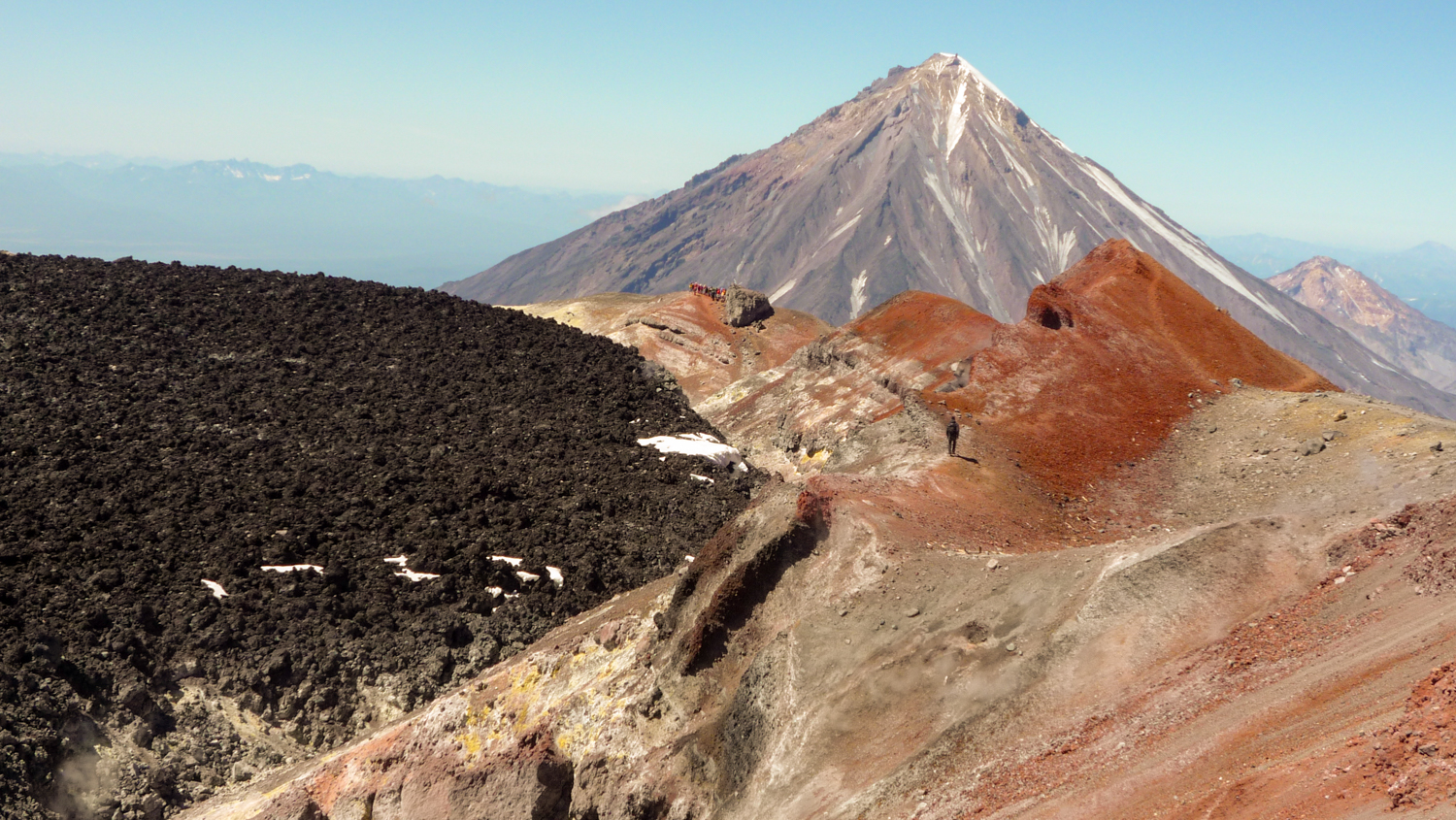 Day 5. After breakfast we will drive to the plateau of Avachinsky Volcano (Avacha) and accommodate in a cozy mountain Lodge “Three Volcanoes”. Day 5. After breakfast we will drive to the plateau of Avachinsky Volcano (Avacha) and accommodate in a cozy mountain Lodge “Three Volcanoes”.
If the weather in the afternoon is fine, it will be possible to take a walk in the direction of volcanic extrusive lava dome, called “the Camel”.
Lava domes form where thick (viscous) magma erupts to the surface forming a steep dome-shaped landform. This particular dome has two summits, so can trace the origin of its name. The absolute altitude above the sea level is 1100-1200 meters, the relative elevation is 200 meters. The crests of the dome are rather rocky, the foot is covered with debris, where on the scree between the bigger blocks you can trace the abundance of alpine vegetation typical for this area. In fine weather from the top of the dome it is possible to observe the slopes of nearby volcanoes – Avachinsky and Koryaksky, and also the group of Mutnovsky and Gorely volcanoes and Avacha bay at a distance. Dinner and overnight in the Lodge.
Day 6. Avacha Volcano ascent (2751m). The trail ascends by a gradual slope to the top (in general time needed 5-6 hours for the ascent). The climbing speed will be adapted to the one, which is comfortable for the whole group by the mountain guide.
Avachinsky - one of Kamchatka's most active volcanoes, rises above Petropavlovsk. It consists of a late Pleistocene edifice, destroyed by a large horseshoe-shaped crater, which encloses the Young Cone strato-volcano. Avachinsky’s edifice resembles the Somma-Vesuvius complex, that is why the old part of it sometimes is called Avachinsky Somma.
You can have lunch on the edge of the crater of the volcano filled to the brim with hardened black lava after the eruption in 1991. Between the new lava and the old crater of red color there are many steam vents, giving bright sulphur-yellow fumarole incrustation to the rocks. In fine weather you can also enjoy the magnificent panorama of the Pacific Ocean, Petropavlovsk, Zhupanovsky and Koryaksky Volcanoes, and Nalycheva Valley. Return to the lodge. Dinner and rest.
Day 7. Reserve day in case of bad weather.
Driving to the area of Paratunka Hot spring, accommodation in Sputnik Hotel. Day of leisure and relax.
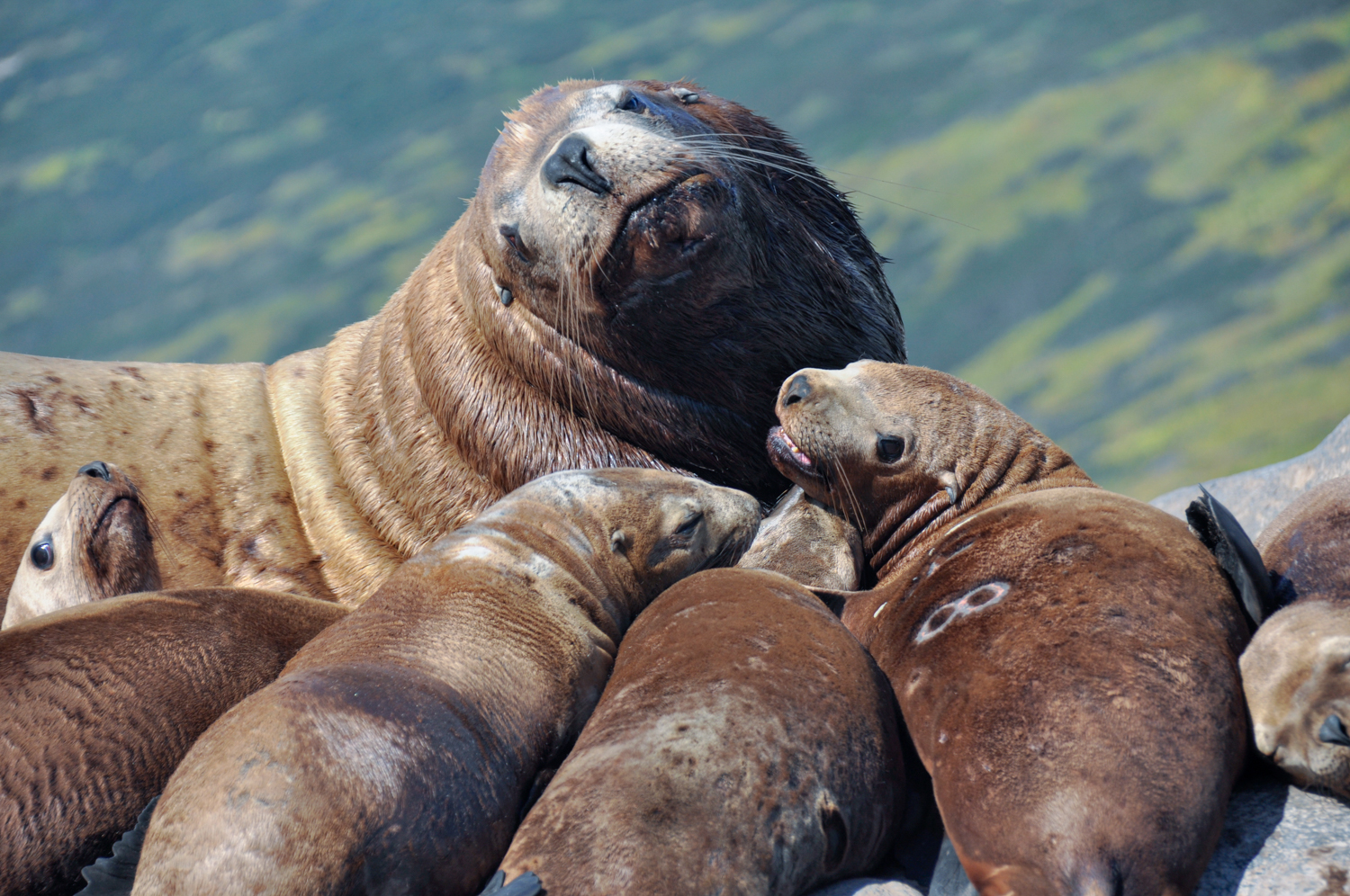 Day 8. Day boat-trip to Russkaya Bay (Russian Bay) and Kekurniy Cape. Day 8. Day boat-trip to Russkaya Bay (Russian Bay) and Kekurniy Cape.
In the early morning after breakfast we will drive to the southern part of Petropavlovsk-Kamchatsky city to the peer, from where on Kathleen boat we shall have a sea trip in the water area of Avacha gulf to Kekurniy Cape located by Russkaya Bay.
This boat trip out into the bay is a very relaxing way of gaining an alternative view of the splendid setting of Petropavlovsk and its dramatic volcanoes. The expanse of the hilly city soon falls into perspective. Further toward the middle of the bay, both Koryaksky and Avacha volcanoes come into view behind the city. When Avacha erupted in 1991, people living in Petropavlovsk could watch the red stream of lava coming down the slope towards the city, while hot ashes were shooting into the skies above the summit crater. Avacha Bay is geographically as perfect a bay as a city could hope for. It is large and deep, with a narrow opening which keeps out foul weather and ice. The harbor is open to shipping year-round, and is also well protected from the dreaded tsunami waves that are created by earthquakes around the Pacific Ocean margins. The boat heads toward the mouth of the bay, allowing views of the Northwest side of Petropavlovsk and the many boats that make their home in these ports. Near the mouth of the bay, the Three Brothers are tall finger-like sea stacks, whose rock faces rise vertically out of the water. The cliffs around the bay house many colonies of seabirds in their natural habitats. Soon we will leave the bay and make our way to Starichkov Island to view colonies of tufted puffins, cormorants, kittiwakes and guillemots. After lunch on board, we will continue our trip and proceed to Kekurniy Cape to watch the rookery of sea lions. It is quite possible to see orcas on the way there and back. The captain will also make stops for fishing. Return to peer. Overnight in Petropavlovsk Hotel.
 Day 9. Transfer to the heli-pad, the flight on MI-8 helicopter to Khodutka mineral hot springs for bathing. This is the largest wild hot spring in Kamchatka. The water bubbles out on a section of tundra located just beneath Khodutka Volcano and forms a small stream. Further from the source the water slowly cools and you can find the location where the temperature is right for you to take a swim. After the relaxing thermal bath, the helicopter will take you to Ksudach volcano, a real southern giant which belongs to caldera-type volcanoes. Its volcanic massif is located in the frontal volcanic zone of Kamchatka. It is noted for repetitive voluminous caldera-forming eruptions during Late Pleistocene-Holocene and large explosive eruptions from the Shtyubel' volcano, located within the most recent caldera. The only historically recorded eruption occurred in 1907; its fall deposit can be traced to the north for more than 200 km. After numerous grandiose eruptions the great part of its construction had been ruined and filled with water forming caldera lakes. Here you can walk along the crater of Shtyubel’ and take many wonderful photographs. Day 9. Transfer to the heli-pad, the flight on MI-8 helicopter to Khodutka mineral hot springs for bathing. This is the largest wild hot spring in Kamchatka. The water bubbles out on a section of tundra located just beneath Khodutka Volcano and forms a small stream. Further from the source the water slowly cools and you can find the location where the temperature is right for you to take a swim. After the relaxing thermal bath, the helicopter will take you to Ksudach volcano, a real southern giant which belongs to caldera-type volcanoes. Its volcanic massif is located in the frontal volcanic zone of Kamchatka. It is noted for repetitive voluminous caldera-forming eruptions during Late Pleistocene-Holocene and large explosive eruptions from the Shtyubel' volcano, located within the most recent caldera. The only historically recorded eruption occurred in 1907; its fall deposit can be traced to the north for more than 200 km. After numerous grandiose eruptions the great part of its construction had been ruined and filled with water forming caldera lakes. Here you can walk along the crater of Shtyubel’ and take many wonderful photographs.
One more short flight and you’ll find yourself at the bank of Kurilskoye lake.
Ringed by mountains and situated in an ancient volcano crater, Kurilskoye Lake is one of Kamchatka's trademark destinations.
Here you will take part in the best bear viewing not only in the peninsula but in the World. You will have an opportunity to go on a boat excursion to the mouth of Khakitsin river (the biggest spawning river running into the lake) and across the lake cape. During the trip you will watch how the bears are walking, fishing, resting, sleeping, in general, doing their bear things, paying absolutely no attention to humans. All excursions at the territory of the South Kamchatka Sanctuary, to the area of which the lake belongs to, will be escorted by the inspector of the preserve and under his unfaltering watch. The rules of the preserve and suggestions of the inspector are mandatory, as we are only guests in here, the master is the Brown Bear.
Having enjoyed the scenery of the lake to the full, we will take a short and final flight for today to the heli-pad near Pauzhetka settlement, where the group will be met by all-terrain 6WD bus, the mountain guide and the cook of the Company. Accommodation at the tourist camp, dinner and rest in own pool with thermal hot water.
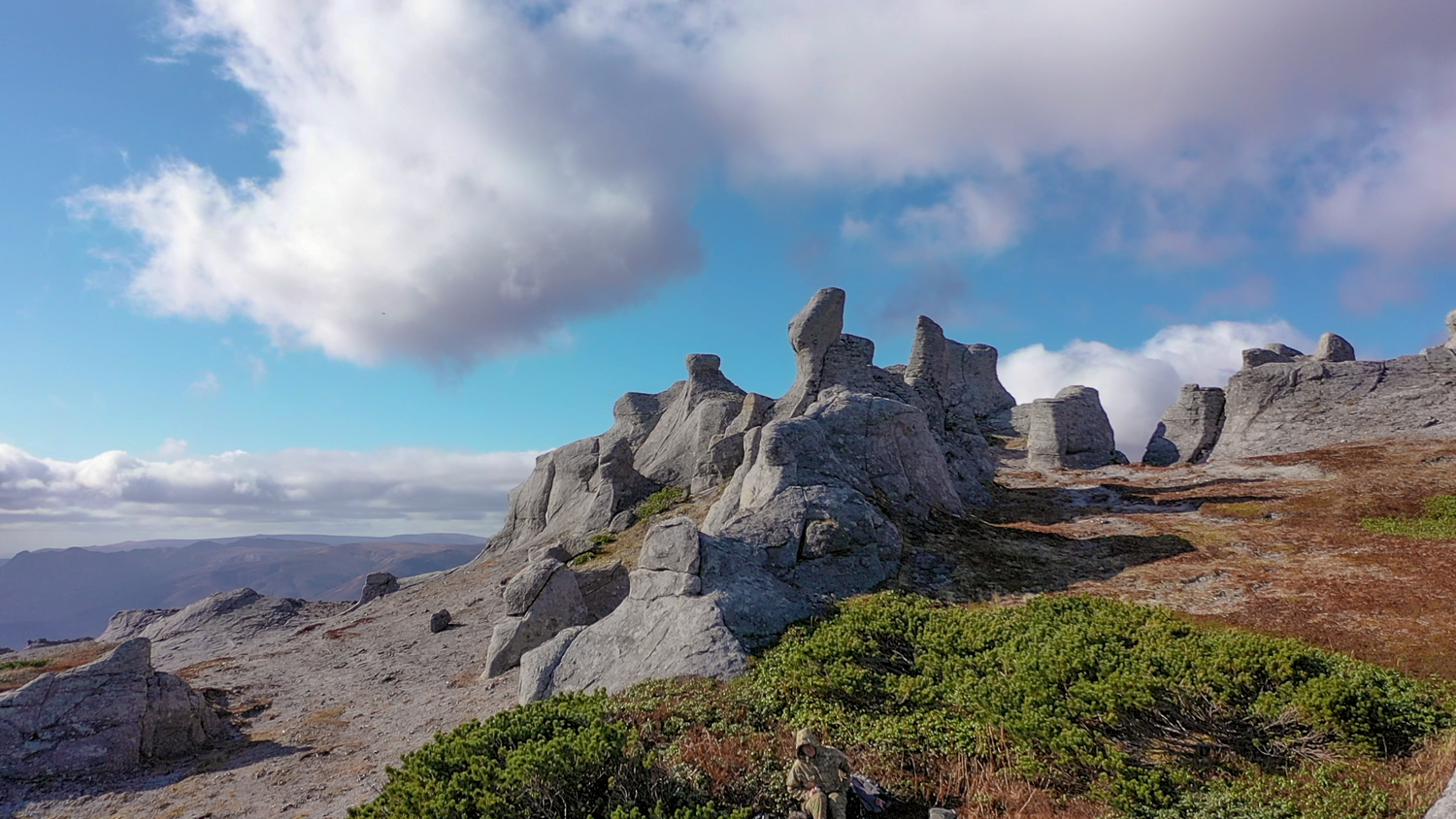 Day 10. All this day will be devoted to Pauzhetka settlement and its surroundings. You will pay a visit to Pauzhetka Geothermal power station to make a closer acquaintance of one of the most eco-friendly energy resources – the natural hot steam, produced by the high-power Kambalnaya hydrothermal system. Day 10. All this day will be devoted to Pauzhetka settlement and its surroundings. You will pay a visit to Pauzhetka Geothermal power station to make a closer acquaintance of one of the most eco-friendly energy resources – the natural hot steam, produced by the high-power Kambalnaya hydrothermal system.
Pauzhetka is the oldest geothermal power station in Russia.
The station was opened in 1966 as an experimental power plant and it was the first geothermal power station in the USSR. In 2010 the installed capacity of the station was 12.0 MW. Due to the fact that the equipment of the station is quite old and the area around is full of various out of service machinery it all looks quite post-apocalyptic.
Geothermal power plants produce electricity from underground heat sources. Heat is supplied by wells either in the form of steam or hot water. In volcanic areas, such as Kamchatka, ground waters are heated above the boiling point at relatively shallow depths. Water (steam) rises to the surface, manifesting itself in the form of geysers or simply as a “steaming” earth.
The operating field of the station is a network of geothermal wells. Some of them work for their intended purpose, others experimental, and others are blocked. From a few of them hot steam is fed through a pipeline to the steam turbines, installed in the engine room of the station. During the development and construction periods about 70 wells were drilled, nowadays only 9 are in use. The station supplies four settlements with hot water and electricity: Ozernovskiy, Zaporozhie, Shumniy and Pauzhetka.
Not far away from the plant you can visit the multi-colored mud-pots, hot lakes, fumaroles and solfataras of Pauzhetka hydrothermal field.
Due to the fact that this area is very remote, it is quite possible here to meet a brown bear lazily walking around the outskirts of the village and plant. That is why all excursions will be of group character and escorted by guides. Overnight in tourist camp in Pauzhetka Village.
Day 11. Today we will continue exploring the surroundings in the area of Pauzhetka geothermal fields and visit another vivid and picturesque place “The Rocky Town”. After breakfast you ought to have an anorak, extra sweater and woolly hat on, or in a day bag. Food will be provided in the form of packed lunch. A water bottle is useful for your own drinking supply. Don’t forget to take the rain coat and pants for Kamchatka's unpredictable weather and mosquito spray for Kamchatka's most predictable evil - mosquitoes. “The Rocky Town” is located in a 3-4 hours walk up the hill at the altitude of 600 meters. The trail is quite twisty, for some time we will follow the rocky stream current, cross some brooks and thick Kamchatka shrubs of alder and dwarf pine. As a result of your efforts and works a reward in weathered rock sculptures of weird, bizarre forms and shapes will appear. In fine weather down below, you can enjoy the bright view of southern volcanoes and rivers. Here on the plateau covered with thick carpet of grasses, lichens and mosses of all spectrum of green we will make a longer stop to have a snack and rest, feasting eyes on the landscapes of sublime beauty, untouched by humans. Return to the base camp. Rest.
 Day 12. Today we are leaving our base camp and the south of Kamchatka and crawl up closer to civilization. After early breakfast we drive on northwards in the direction of small balneological resort at Apachinskiye hot springs. As the western coast of Kamchatka peninsula, washed by cold waters of the Sea of Okhotsk, is rather leveled by severe storms in autumn and winter time, on the way we will watch an amazing picture of vast grassy plain and endless black coastline made up from titanomagnetite sand. On the way to the resort we will have three river crossing sites (at Koshegochek, Opala and Bolshaya rivers counting from south to north). We are sure, the view of this feat of engineering, constructed by Russian genius won’t allow you to stay indifferent, as it is quite a thrill what kind of technological wonder a human can build if he lives pretty far away from civilization and is limited in hardware. So, it turns out to be that a river crossing facility can be produced from completely multifarious tools and mechanisms originally not adapted for this kind of means of locomotion. Bless the Russian creativity! In order to make this long ride less tiresome we will make a long stop half-way and our cook will provide us with a perfect hot lunch for, so you can stretch your legs, rest and enjoy the hot meal. (The distance between Pauzhetka settlement and the coast of the Okhotsk Sea is approximately 67 km, however it will take us about 2,5-3 hours to get there, as the speed won’t be more than 20 km per hour as the terrain is not very easy. Then we will cover about 120 km to Ust-Bolsheretsk settlement with the speed of 20-30 km per hour that will come as about 8 hours more and plus the last 83 km to Avachinsky Resort, that will turn out to be 2 hours more). Whoosh! We are there!!! Day 12. Today we are leaving our base camp and the south of Kamchatka and crawl up closer to civilization. After early breakfast we drive on northwards in the direction of small balneological resort at Apachinskiye hot springs. As the western coast of Kamchatka peninsula, washed by cold waters of the Sea of Okhotsk, is rather leveled by severe storms in autumn and winter time, on the way we will watch an amazing picture of vast grassy plain and endless black coastline made up from titanomagnetite sand. On the way to the resort we will have three river crossing sites (at Koshegochek, Opala and Bolshaya rivers counting from south to north). We are sure, the view of this feat of engineering, constructed by Russian genius won’t allow you to stay indifferent, as it is quite a thrill what kind of technological wonder a human can build if he lives pretty far away from civilization and is limited in hardware. So, it turns out to be that a river crossing facility can be produced from completely multifarious tools and mechanisms originally not adapted for this kind of means of locomotion. Bless the Russian creativity! In order to make this long ride less tiresome we will make a long stop half-way and our cook will provide us with a perfect hot lunch for, so you can stretch your legs, rest and enjoy the hot meal. (The distance between Pauzhetka settlement and the coast of the Okhotsk Sea is approximately 67 km, however it will take us about 2,5-3 hours to get there, as the speed won’t be more than 20 km per hour as the terrain is not very easy. Then we will cover about 120 km to Ust-Bolsheretsk settlement with the speed of 20-30 km per hour that will come as about 8 hours more and plus the last 83 km to Avachinsky Resort, that will turn out to be 2 hours more). Whoosh! We are there!!!
Finally in the evening we will arrive to the resort, where you can have dinner, finally take a shower and relax in the thermal water in the outdoor swimming pool. The size of the pool is 20 to 10 meters with different bottom level. The thermal water comes from a private 700 meters borehole. The water in the pool is purely natural, no chemical agents added. The temperature of the water is perfectly moderate, so you can swim there throughout the whole year. These springs were discovered when Russian Cossacks explored the peninsula in the 17th century. Unlike the indigenous Koryaks and Itelmens, Russian people had always been interested in the thermal springs and liked using them to treat different diseases and recover from them. The healing qualities of this mineral spring are used to treat joint, bone, muscles, gynecological diseases, to sooth intoxication, to improve nervous system. Content of the water: sodium chloride hydro carbonate with additives of boron, lithium, ferrum and aluminium.
Day 13. Return to Petropavlovsk-Kamchatsky.
After breakfast you will have some time to bathe in the springs and then we will drive back to civilization. Lunch and dinner in the restaurants of the city. Overnight in Petropavlovsk Hotel.
 Day 14. OPTIONAL helicopter excursion to the Valley of Geysers. Day 14. OPTIONAL helicopter excursion to the Valley of Geysers.
The drive from the hotel to the helipad will take about 45-50 minutes. The flight time to the Valley is 1 hour. The helicopter will land at the pad next to the Lodge of Kronotsky Preserve. It is a control check-in location where all tourists, visiting the Geyser Valley and Uzon Caldera, come for registration. All self-willed walks without the representative of the Preserve and the guide are forbidden. So, you will have to stay with the group in the whole course of excursion. The total duration of the tour is 5-6 hours.
The Valley of Geysers.
The cluster of geysers, fumaroles and hot springs in this valley were only discovered in 1941. They lie above the marginal fractures of the old Uzon caldera. The hot water that emerges is largely recirculated rainfall, mixed with some juvenile water from magma. Volcanologists consider, that the magmatic heat source is provided by Kikhpinych volcano. The Geysernaya River has cut its valley into bedded andesitic tuffs that were deposited in a lake in the first Uzon caldera; the southeastern valley slope is the heavily eroded caldera wall, broken into older volcanic. Some dacite lavas and intrusions occur in the tuffs, and all the exposed rocks have been altered hydro thermally. Some slopes have been gullied to leave earth pillars. There are extensive deposits of opaline siliceous geyserite, some built into large banks and terraces below the main vents. During the excursion in the Valley, which is provided along the wooden trails and guided by the inspectors of Kronotsky Preserve, you can watch different types of thermal manifestations - mud and thermal water pots, pulsating springs, geysers, covered with shields of geyserite colored with bright green, yellow and orange of thermophilic algae’s stripes. The valley's geysers include a few with large but brief periodic eruptions, and many more which produce hot water spouts frequently or almost continuously. The total duration of the excursion in the Valley is 1-1,5 hours.
The Uzon Caldera
The Uzon depression is bordered to the north and west by steep caldera walls that have survived into the modern landscape. These are essentially features of the second in the series of three caldera collapses; the third (minor) collapse merely deepened the depression west of the heli pad that is now largely marsh ground and lake remnants on a floor of lacustrine sediments. The highest ground is formed by the basaltic cone of Uzon volcano, which stands above the western rim of the caldera. Immediately west of the heli pad, Bannoye Lake has a steam vent beneath it; this erupted in 1989, but is now quiet. The lake is about 30m deep, and its lower 7m are a pool of liquid sulphur at a temperature of 140oC; large blocks of glassy black sulphur have been extracted by volcanologists. It appears that the sulphur vent is similar to the black smokers of ocean floors. Further west, trails wind across the marsh ground on the caldera floor to a variety of hot springs, boiling lakes and mud pots in the dacitic tuffs and lake sediments. Various hot springs have associated sulphur, opal, pyrite and mercury deposits. Most of the colouring at the spring sites is due to temperature-sensitive algae.
Towards the East, a trail leads through alder bushes up the Belaya dome; this is formed of slab-jointed dacite porphyry that varies from dark lava and tuff to glassy obsidian and light pumice. Some is hydro thermally. altered, with kaolinite, opal, alunite and sulphur. Adjacent to Belaya, there are two small acid lakes with pH of 2. Further North. Lake Dalneye is nearly 1 km across, in a splendid maar crater fringed by a tuff ring of very scoriaceous basalt; it was produced by the modest steam explosions of a phreatic eruption from a vent beneath the lakes and marshes of the caldera floor.
After the Walk in Uzon Caldera, the helicopter will take you to Nalycheva hot spring where you can take a bath and have your lunch (lunch box). Return flight, and by bus back to Petropavlovsk Hotel. Dinner and rest.
Day 15. Depart Kamchatka Peninsula. In the morning before the flight, if time permits, it is possible to drive to the city central fish market to buy some Kamchatka fish delicacies.
Cost EUR 3200 per person
Price includes:
- Full board (all meals)
- Twin bedded accommodation in hotels, 2-4 bedded in Pauzhetka dormitory and Avacha Volcano cabins;
- Motor boat and walking excursion on Kurilskoye Lake
- English-speaking rep at the arrival and departure in the PKC airport
- Transfers by coach, 6WD truck-bus, marine boat and MI-8 helicopter (excluding day excursion to the Geysers Valley)
- City tour and museums entrance
- Guides, interpreter and cook services
- Kitchen equipment
- Visa invitation and visa registration
- Permits
- Kronotsky Reserve fees and photography fees (drone is not allowed only there)
Walking Grades and Fitness
Grading is a somewhat difficult topic as much depends on the individuals own perception of his or her abilities. The following is intended as a general guide to our grading system. The levels of difficulty are divided into categories B/C/D. Although the trekking is not at great altitude, it occasionally traverses rough terrain and involves some long days and steep climbs.
Grade B walks (Moderate): are for those of any fitness level who are able to traverse moderately hilly terrain. Walking is limited to day excursions from a central location to which you will be transported. These day hikes are normally no more than 6 hours in duration and all walking may be done with no backpack or with a light day pack.
Grade C walks (Strenuous): are for the more serious hill walker and a higher level of physical fitness is required. However, no special physical preparations should be needed. Walking days are normally 6-8 hrs and may involve up to 900m of ascent and descent. You should be prepared for several consecutive days of walking, sometimes at higher altitudes, so stamina is important. However, occasionally rest days in the course of the trek will be included.
Grade D walks (Tough): require that you are very fit and previous trekking experience is strongly recommended. Grade D includes long walks with steep uphill and downhill gradients. There will be some hiking at high altitudes (up to 4000m) and corresponding cold weather conditions. These treks will also involve several long days (up to 8-9 hours) of trekking continuously without a rest day. |
#104. Kurilskoye Lake and Western Kamchatka: bears, Okhotsk sea shore and 3 active volcanoes. NO TENTS TRIP!
|
Departures 2024:
July 20th 
August 7th 
Grade B/C, no tents trip!
Kamchatka peninsula is an isolated, undeveloped, stunningly beautiful area with noble ranges of extinct and active volcanoes, pearls of crystal-clear blue lakes and acidic ones of inconceivable colors and shades from orange to obsidian-black; with river ribbons and emerald-green valleys, crossed by lilac-purple threads of blossoming willow-herb. 1200 km long from North to South and nearly 600 km across in its widest part… How to embrace the boundless? We suggest you to get the maximum possible experience out of this 15-days trip perceiving all the variety of Kamchatka's awesome landscapes in this extremely eventful and perfectly arranged tour.
This trip includes the most interesting active volcanoes and the great amount of thermal manifestation following them, though their enormous diversity can easily leave behind the world-famous Yellowstone and New-Zealand parks; a group of balneotherapeutic health resorts, where you can rest and relax after busy and eventful day; a visit to Kurilskoye lake where you can get acquainted with Kamchatka brown bears, their habits and manners and watch the spawning salmon; a tour to the Geothermal power station to investigate its working processes and picturesque surroundings; river and sea fishing; watching bird colonies and rookeries of sea-lions at Kekurniy cape. 15 days full of events and experiences with no nights in tents!
15 DAY ITINERARY
Day 1. Arrival in Petropavlovsk Kamchatsky. Transfer to the "Petropavlovsk" hotel and welcome dinner. Briefing and time to prepare for the tour. Welcome dinner in a restaurant.
 Day 2. Today we will drive with the all-terrain bus in the direction of Mutnovsky Volcano plateau and settle a bit more than half-way in a picturesque spot called Karimshina Hot springs. It is a quite new small resort, located in a spectacular mountainous area. The way there won’t take more than 2-2,5 hours, so there will be plenty of time to roam about and relax in the swimming pools with thermal water. Overnight in the Resort. Day 2. Today we will drive with the all-terrain bus in the direction of Mutnovsky Volcano plateau and settle a bit more than half-way in a picturesque spot called Karimshina Hot springs. It is a quite new small resort, located in a spectacular mountainous area. The way there won’t take more than 2-2,5 hours, so there will be plenty of time to roam about and relax in the swimming pools with thermal water. Overnight in the Resort.
Day 3. Day trip to Gorely Volcano and Lava Caves.
After breakfast, we will drive to the plateau of Mutnovsky and Gorely volcanoes (2-2,5 hours, it depends on the road condition) and stop at the foot of Gorely Volcano. The ascend starts here.
Gorely Volcano.
This shield volcano with vast flattened caldera has 11 craters. We are going to visit the two most interesting ones.
The first large crater contains a cold dark-blue lake about 100 m below; its surface has ice floes from a small glacier on its internal slope. The walls of all the craters expose profiles through thick sequences of lava flows with a limited component of interbedded pyroclastics. Continue beyond it to a broad shelf that extends inside the very large old central crater. Picnic lunch on the shelf. Just ahead, there is a sudden, unguarded, vertical descent into the active crater. It is about 100 m deep and, on its bottom, you can trace the series of active fumaroles and solfataras. A vivid smell of sulphur and other poisonous elements can be easily distinguished in the air. After exploring the 2nd crater, we will return to the bus and drive to the Lava Caves.
Lava Caves. The lava caves at the territory of Gorely volcano are situated to the north of it at a not very big area of ancient lava flow about 2000 years old. Volcanologists have mapped here 14 caves, the longest is about 140 meters and the shortest – 16 meters. Relatively high and wide grots are the characteristics of the major part of Gorely’s caves due to the fact that they are pretty old and had been destroyed in the course of time in many parts of the flow. All caves of Gorely volcano are concentrated on one part of single lava flow.
Lava cave can be formed as a result of surface solidification of a lava flow during the last stages of its activity. A frozen crust may form over still mobile and actively flowing liquid rock as a result of surface cooling. A dwindling supply of lava may then cause the molten material to drain out from under this crust and leave long cylindrical tunnels. Drive back to the Resort. Dinner and rest.
 Day 4. Day trip to the crater of Mutnovsky Volcano or to Dachniye Hot Springs (depends on the time of year and road condition). Day 4. Day trip to the crater of Mutnovsky Volcano or to Dachniye Hot Springs (depends on the time of year and road condition).
After breakfast, we will drive to the plateau of Mutnovsky and Gorely volcanoes (2-2,5 hours depends on the road condition).
Mutnovsky Volcano.
The crater of Mutnovsky volcano is a truly unique phenomenon in the World. You will have an opportunity not only to take a glance inside of the active crater from its rim, but to stroll on its particular bottom. Everything is boiling and bubbling under your feet, so the excursion is organized only along a singular fixed trail. Fumaroles, solfataras, mud pots, multi-colored acidic lakes, the smell of sulphur and clouds of steam and smoke – a real Journey to the Centre of the Earth! The slopes of the crater are covered with inlet of different minerals condensate from the gasses coming out through the thermal vents all around. The caldera's eastern glacier of bright blue in its upper part, lies ahead, where it melts out on a steep rock slope, aided by a series of fumaroles; steam from these has created ice tunnels that emerge in the glacier snout. The acrid smoke of the Active crate called “The Socket” in fine weather can be observed miles away from it. Lunch (lunch boxes) will be organized at a spot away from the fumaroles at the exit from the crater. Return to the Resort. Dinner.
or
Dachniye Hot Springs.
Dachniye Hot springs – is the biggest group of springs at the plateau of Gorely and Mutnovsky volcanoes. They are situated on the south-eastern foot of Skalistaya (Rocky) hill, next to Mutnovsky volcano. It is a unique active fumarolic field, where the hot gasses go through the waters of the cold brook, heating it up, sometimes creating the spouting effect. These thermal springs are placed in the ravine with precipitous walls. On its left side you can observe several thermal grounds with wisps of hot steam emerging from them on the surface. A big pot of hot mineralized water is bubbling beneath its right-side slope. Up the stream a bit further, nearly in its course, there is a big steam-water fountain. Dinner and overnight at the Resort.
 Day 5. After breakfast we will drive to the plateau of Avachinsky Volcano (Avacha) and accommodate in a cozy mountain Lodge “Three Volcanoes”. Day 5. After breakfast we will drive to the plateau of Avachinsky Volcano (Avacha) and accommodate in a cozy mountain Lodge “Three Volcanoes”.
If the weather in the afternoon is fine, it will be possible to take a walk in the direction of volcanic extrusive lava dome, called “the Camel”.
Lava domes form where thick (viscous) magma erupts to the surface forming a steep dome-shaped landform. This particular dome has two summits, so can trace the origin of its name. The absolute altitude above the sea level is 1100-1200 meters, the relative elevation is 200 meters. The crests of the dome are rather rocky, the foot is covered with debris, where on the scree between the bigger blocks you can trace the abundance of alpine vegetation typical for this area. In fine weather from the top of the dome it is possible to observe the slopes of nearby volcanoes – Avachinsky and Koryaksky, and also the group of Mutnovsky and Gorely volcanoes and Avacha bay at a distance. Dinner and overnight in the Lodge.
Day 6. Avacha Volcano ascent (2751m). The trail ascends by a gradual slope to the top (in general time needed 5-6 hours for the ascent). The climbing speed will be adapted to the one, which is comfortable for the whole group by the mountain guide.
Avachinsky - one of Kamchatka's most active volcanoes, rises above Petropavlovsk. It consists of a late Pleistocene edifice, destroyed by a large horseshoe-shaped crater, which encloses the Young Cone strato-volcano. Avachinsky’s edifice resembles the Somma-Vesuvius complex, that is why the old part of it sometimes is called Avachinsky Somma.
You can have lunch on the edge of the crater of the volcano filled to the brim with hardened black lava after the eruption in 1991. Between the new lava and the old crater of red color there are many steam vents, giving bright sulphur-yellow fumarole incrustation to the rocks. In fine weather you can also enjoy the magnificent panorama of the Pacific Ocean, Petropavlovsk, Zhupanovsky and Koryaksky Volcanoes, and Nalycheva Valley. Return to the lodge. Dinner and rest.
Day 7. Reserve day in case of bad weather.
Driving to the area of Paratunka Hot spring, accommodation in Sputnik Hotel. Day of leisure and relax.
 Day 8. Day boat-trip to Russkaya Bay (Russian Bay) and Kekurniy Cape. Day 8. Day boat-trip to Russkaya Bay (Russian Bay) and Kekurniy Cape.
In the early morning after breakfast we will drive to the southern part of Petropavlovsk-Kamchatsky city to the peer, from where on Kathleen boat we shall have a sea trip in the water area of Avacha gulf to Kekurniy Cape located by Russkaya Bay.
This boat trip out into the bay is a very relaxing way of gaining an alternative view of the splendid setting of Petropavlovsk and its dramatic volcanoes. The expanse of the hilly city soon falls into perspective. Further toward the middle of the bay, both Koryaksky and Avacha volcanoes come into view behind the city. When Avacha erupted in 1991, people living in Petropavlovsk could watch the red stream of lava coming down the slope towards the city, while hot ashes were shooting into the skies above the summit crater. Avacha Bay is geographically as perfect a bay as a city could hope for. It is large and deep, with a narrow opening which keeps out foul weather and ice. The harbor is open to shipping year-round, and is also well protected from the dreaded tsunami waves that are created by earthquakes around the Pacific Ocean margins. The boat heads toward the mouth of the bay, allowing views of the Northwest side of Petropavlovsk and the many boats that make their home in these ports. Near the mouth of the bay, the Three Brothers are tall finger-like sea stacks, whose rock faces rise vertically out of the water. The cliffs around the bay house many colonies of seabirds in their natural habitats. Soon we will leave the bay and make our way to Starichkov Island to view colonies of tufted puffins, cormorants, kittiwakes and guillemots. After lunch on board, we will continue our trip and proceed to Kekurniy Cape to watch the rookery of sea lions. It is quite possible to see orcas on the way there and back. The captain will also make stops for fishing. Return to peer. Overnight in Petropavlovsk Hotel.
 Day 9. Drive to Apacha Hot Springs Resort (150 km). Today we are leaving civilization and drive to the west. We will spend this day in a nice balneological resort called Apachinskiye Hot Springs. There you can relax in the thermal water in the outdoor swimming pool. The size of the pool is 20 to 10 meters with different bottom level. The thermal water comes from a private 700 meters borehole. The water in the pool is purely natural, no chemical agents added. The temperature of the water is perfectly moderate, so you can swim there throughout the whole year. These springs were discovered when Russian Cossacks explored the peninsula in the 17th century. Unlike the indigenous Koryaks and Itelmens, Russian people had always been interested in the thermal springs and liked using them to treat different diseases and recover from them. The healing qualities of this mineral spring are used to treat joint, bone, muscles, gynecological diseases, to sooth intoxication, to improve nervous system. Content of the water: sodium chloride hydro carbonate with additives of boron, lithium, ferrum and aluminium. Day 9. Drive to Apacha Hot Springs Resort (150 km). Today we are leaving civilization and drive to the west. We will spend this day in a nice balneological resort called Apachinskiye Hot Springs. There you can relax in the thermal water in the outdoor swimming pool. The size of the pool is 20 to 10 meters with different bottom level. The thermal water comes from a private 700 meters borehole. The water in the pool is purely natural, no chemical agents added. The temperature of the water is perfectly moderate, so you can swim there throughout the whole year. These springs were discovered when Russian Cossacks explored the peninsula in the 17th century. Unlike the indigenous Koryaks and Itelmens, Russian people had always been interested in the thermal springs and liked using them to treat different diseases and recover from them. The healing qualities of this mineral spring are used to treat joint, bone, muscles, gynecological diseases, to sooth intoxication, to improve nervous system. Content of the water: sodium chloride hydro carbonate with additives of boron, lithium, ferrum and aluminium.
Day 10. Drive to Pauzhetka settlement.
This will a long driving day to Pauzhetka Geothermal power station.
After an early breakfast we will drive on southwards to Pauzhetka settlement. As the western coast of Kamchatka peninsula, washed by cold waters of the Sea of Okhotsk, is rather leveled by severe storms in autumn and winter time, on the way we will watch an amazing picture of vast grassy plain and endless black coastline made up from titanomagnetite sand. On the way to the tourist camp lodge, we will have three river crossing sites (at Bolshaya, Opala and Koshegochek rivers counting from north to south). We are sure, the view of this feat of engineering, constructed by Russian genius won’t allow you to stay indifferent, as it is quite a thrill what kind of technological wonder a human can build if he lives pretty far away from civilization and is limited in hardware. So, it turns out to be that a river crossing facility can be produced from completely multifarious tools and mechanisms originally not adapted for this kind of means of locomotion. Bless the Russian creativity! In order to make this long ride less tiresome we will make a long stop half-way and our cook will provide us with a perfect hot lunch, so you can stretch your legs, rest and enjoy the hot meal. (The distance from Apachinskiye Hot Springs to Ust-Bolsheretsk settlement is 83 km /around 2hours/. Then from Ust-Bolsheretsk along the coast of the Okhotsk Sea we are to drive about 120 km with the speed of 20-30 km per hour that will come as about 8 hours with all river crossing sites. And then finally to Pauzhetka settlement is approximately 67 km /however it will take us about 2,5-3 hours to get there, the speed won’t be more than 20 km per hour as the terrain is not very easy/. Whoosh! We are there!!! Accommodation in a tourist camp. Dinner and rest.
 Day 11. All this day will be devoted to Pauzhetka settlement and its surroundings. You will pay a visit to Pauzhetka Geothermal power station to make a closer acquaintance of one of the most eco-friendly energy resources – the natural hot steam, produced by the high-power Kambalnaya hydrothermal system. Day 11. All this day will be devoted to Pauzhetka settlement and its surroundings. You will pay a visit to Pauzhetka Geothermal power station to make a closer acquaintance of one of the most eco-friendly energy resources – the natural hot steam, produced by the high-power Kambalnaya hydrothermal system.
Pauzhetka is the oldest geothermal power station in Russia.
The station was opened in 1966 as an experimental power plant and it was the first geothermal power station in the USSR. In 2010 the installed capacity of the station was 12.0 MW. Due to the fact that the equipment of the station is quite old and the area around is full of various out of service machinery it all looks quite post-apocalyptic.
Geothermal power plants produce electricity from underground heat sources. Heat is supplied by wells either in the form of steam or hot water. In volcanic areas, such as Kamchatka, ground waters are heated above the boiling point at relatively shallow depths. Water (steam) rises to the surface, manifesting itself in the form of geysers or simply as a “steaming” earth.
The operating field of the station is a network of geothermal wells. Some of them work for their intended purpose, others experimental, and others are blocked. From a few of them hot steam is fed through a pipeline to the steam turbines, installed in the engine room of the station. During the development and construction periods about 70 wells were drilled, nowadays only 9 are in use. The station supplies four settlements with hot water and electricity: Ozernovskiy, Zaporozhie, Shumniy and Pauzhetka.
Not far away from the plant you can visit the multi-colored mud-pots, hot lakes, fumaroles and solfataras of Pauzhetka hydrothermal field.
Due to the fact that this area is very remote, it is quite possible here to meet a brown bear lazily walking around the outskirts of the village and plant. That is why all excursions will be of group character and escorted by guides. Overnight in tourist camp in Pauzhetka Village.
Day 12. Today we will continue exploring the surroundings in the area of Pauzhetka geothermal fields and visit another vivid and picturesque place “The Rocky Town”. After breakfast you ought to have an anorak, extra sweater and woolly hat on, or in a day bag. Food will be provided in the form of packed lunch. A water bottle is useful for your own drinking supply. Don’t forget to take the rain coat and pants for Kamchatka's unpredictable weather and mosquito spray for Kamchatka's most predictable evil - mosquitoes. “The Rocky Town” is located in a 3-4 hours walk up the hill at the altitude of 600 meters. The trail is quite twisty, for some time we will follow the rocky stream current, cross some brooks and thick Kamchatka shrubs of alder and dwarf pine. As a result of your efforts and works a reward in weathered rock sculptures of weird, bizarre forms and shapes will appear. In fine weather down below, you can enjoy the bright view of southern volcanoes and rivers. Here on the plateau covered with thick carpet of grasses, lichens and mosses of all spectrum of green we will make a longer stop to have a snack and rest, feasting eyes on the landscapes of sublime beauty, untouched by humans. Return to the base camp. Rest.
 Day 13. After lunch we will be transferred to the bank of Kurilskoye Lake. Ringed by mountains and situated in an ancient volcano crater, Kurilskoye Lake is one of Kamchatka's trademark destinations.
Here you will take part in the best bear viewing not only in the peninsula but in the World. You will have an opportunity to go on a boat excursion across the lakes cape. During the trip you will watch how the bears are walking, fishing, resting, sleeping, in general are doing their bear things, paying absolutely no attention to humans. All excursions at the territory of the South Kamchatka Sanctuary, to the area of which the lake belongs to, will be escorted by the inspector of the preserve and under his unfaltering watch. The rules of the preserve and suggestions of the inspector are mandatory, as we are only guests in here, the master is the Brown Bear.
Having enjoyed the scenery of the lake to the full, we will fly back to civilization on MI-8 helicopter.
On the way back if the weather condition permits, we will make a stop at Khodutka mineral hot springs or at the Crater of Ksudach Volcano. Day 13. After lunch we will be transferred to the bank of Kurilskoye Lake. Ringed by mountains and situated in an ancient volcano crater, Kurilskoye Lake is one of Kamchatka's trademark destinations.
Here you will take part in the best bear viewing not only in the peninsula but in the World. You will have an opportunity to go on a boat excursion across the lakes cape. During the trip you will watch how the bears are walking, fishing, resting, sleeping, in general are doing their bear things, paying absolutely no attention to humans. All excursions at the territory of the South Kamchatka Sanctuary, to the area of which the lake belongs to, will be escorted by the inspector of the preserve and under his unfaltering watch. The rules of the preserve and suggestions of the inspector are mandatory, as we are only guests in here, the master is the Brown Bear.
Having enjoyed the scenery of the lake to the full, we will fly back to civilization on MI-8 helicopter.
On the way back if the weather condition permits, we will make a stop at Khodutka mineral hot springs or at the Crater of Ksudach Volcano.
Khodutka hot springs is the largest wild hot springs in Kamchatka. The water bubbles out on a section of tundra located just under Khodutka Volcano and forms a small stream. Farther from the source the water slowly cools and you can find the location where the temperature is right for you to take a swim.
Ksudach Volcano. It is real southern giant which belongs to caldera-type volcanoes. Its volcanic massif is located in the frontal volcanic zone of Kamchatka. It is noted for repetitive voluminous caldera-forming eruptions during Late Pleistocene-Holocene and large explosive eruptions from the Shtyubel' volcano, located within the most recent caldera. The only historically recorded eruption occurred in 1907; its fall deposit can be traced to the north for more than 200 km. After numerous grandiose eruptions the great part of its construction had been ruined and filled with water forming caldera lakes. Here you can walk along the crater of Shtyubel’ and take many wonderful photographs.
Return to Petropavlovsk-Kamchatsky. Accommodation at Petropavlovsk Hotel.
 Day 14. OPTIONAL helicopter excursion to the Valley of Geysers. Day 14. OPTIONAL helicopter excursion to the Valley of Geysers.
The drive from the hotel to the helipad will take about 45-50 minutes. The flight time to the Valley is 1 hour. The helicopter will land at the pad next to the Lodge of Kronotsky Preserve. It is a control check-in location where all tourists, visiting the Geyser Valley and Uzon Caldera, come for registration. All self-willed walks without the representative of the Preserve and the guide are forbidden. So, you will have to stay with the group in the whole course of excursion. The total duration of the tour is 5-6 hours.
The Valley of Geysers.
The cluster of geysers, fumaroles and hot springs in this valley were only discovered in 1941. They lie above the marginal fractures of the old Uzon caldera. The hot water that emerges is largely recirculated rainfall, mixed with some juvenile water from magma. Volcanologists consider, that the magmatic heat source is provided by Kikhpinych volcano. The Geysernaya River has cut its valley into bedded andesitic tuffs that were deposited in a lake in the first Uzon caldera; the southeastern valley slope is the heavily eroded caldera wall, broken into older volcanic. Some dacite lavas and intrusions occur in the tuffs, and all the exposed rocks have been altered hydro thermally. Some slopes have been gullied to leave earth pillars. There are extensive deposits of opaline siliceous geyserite, some built into large banks and terraces below the main vents. During the excursion in the Valley, which is provided along the wooden trails and guided by the inspectors of Kronotsky Preserve, you can watch different types of thermal manifestations - mud and thermal water pots, pulsating springs, geysers, covered with shields of geyserite colored with bright green, yellow and orange of thermophilic algae’s stripes. The valley's geysers include a few with large but brief periodic eruptions, and many more which produce hot water spouts frequently or almost continuously. The total duration of the excursion in the Valley is 1-1,5 hours.
The Uzon Caldera
The Uzon depression is bordered to the north and west by steep caldera walls that have survived into the modern landscape. These are essentially features of the second in the series of three caldera collapses; the third (minor) collapse merely deepened the depression west of the heli pad that is now largely marsh ground and lake remnants on a floor of lacustrine sediments. The highest ground is formed by the basaltic cone of Uzon volcano, which stands above the western rim of the caldera. Immediately west of the heli pad, Bannoye Lake has a steam vent beneath it; this erupted in 1989, but is now quiet. The lake is about 30m deep, and its lower 7m are a pool of liquid sulphur at a temperature of 140oC; large blocks of glassy black sulphur have been extracted by volcanologists. It appears that the sulphur vent is similar to the black smokers of ocean floors. Further west, trails wind across the marsh ground on the caldera floor to a variety of hot springs, boiling lakes and mud pots in the dacitic tuffs and lake sediments. Various hot springs have associated sulphur, opal, pyrite and mercury deposits. Most of the colouring at the spring sites is due to temperature-sensitive algae.
Towards the East, a trail leads through alder bushes up the Belaya dome; this is formed of slab-jointed dacite porphyry that varies from dark lava and tuff to glassy obsidian and light pumice. Some is hydro thermally. altered, with kaolinite, opal, alunite and sulphur. Adjacent to Belaya, there are two small acid lakes with pH of 2. Further North. Lake Dalneye is nearly 1 km across, in a splendid maar crater fringed by a tuff ring of very scoriaceous basalt; it was produced by the modest steam explosions of a phreatic eruption from a vent beneath the lakes and marshes of the caldera floor.
After the Walk in Uzon Caldera, the helicopter will take you to Nalycheva hot spring where you can take a bath and have your lunch (lunch box). Return flight, and by bus back to Petropavlovsk Hotel. Dinner and rest.
Day 15. Depart Kamchatka Peninsula. In the morning before the flight, if time permits, it is possible to drive to the city central fish market to buy some Kamchatka fish delicacies.
Cost EUR 3200 per person
Price includes:
- Full board (all meals)
- Twin bedded accommodation in hotels, 2-4 bedded in Pauzhetka dormitory and Avacha Volcano cabins;
- Motor boat and walking excursion on Kurilskoye Lake
- English-speaking rep at the arrival and departure in the PKC airport
- Transfers by coach, 6WD truck-bus, marine boat and MI-8 helicopter (excluding day excursion to the Geysers Valley)
- City tour and museums entrance
- Guides, interpreter and cook services
- Kitchen equipment
- Visa invitation and visa registration
- Permits
- Kronotsky Reserve fees and photography fees (drone is not allowed only there)
Questions? Interested in booking a trip? See here for answers to frequently asked questions and here for more Kamchatka pictures, click here for booking details or ask your questions here.
Return to the main page |
 Day 2. Today we will drive with the all-terrain bus in the direction of Mutnovsky Volcano plateau and settle a bit more than half-way in a picturesque spot called
Day 2. Today we will drive with the all-terrain bus in the direction of Mutnovsky Volcano plateau and settle a bit more than half-way in a picturesque spot called  Day 4. Day trip to the crater of Mutnovsky Volcano or to Dachniye Hot Springs (depends on the time of year and road condition).
Day 4. Day trip to the crater of Mutnovsky Volcano or to Dachniye Hot Springs (depends on the time of year and road condition).  Day 5. After breakfast we will drive to the plateau of Avachinsky Volcano (Avacha) and accommodate in a cozy mountain Lodge “Three Volcanoes”.
Day 5. After breakfast we will drive to the plateau of Avachinsky Volcano (Avacha) and accommodate in a cozy mountain Lodge “Three Volcanoes”.  Day 8. Day boat-trip to Russkaya Bay (Russian Bay) and Kekurniy Cape.
Day 8. Day boat-trip to Russkaya Bay (Russian Bay) and Kekurniy Cape.
 Day 10. All this day will be devoted to Pauzhetka settlement and its surroundings. You will pay a visit to Pauzhetka Geothermal power station to make a closer acquaintance of one of the most eco-friendly energy resources – the natural hot steam, produced by the high-power Kambalnaya hydrothermal system.
Day 10. All this day will be devoted to Pauzhetka settlement and its surroundings. You will pay a visit to Pauzhetka Geothermal power station to make a closer acquaintance of one of the most eco-friendly energy resources – the natural hot steam, produced by the high-power Kambalnaya hydrothermal system. Day 12. Today we are leaving our base camp and the south of Kamchatka and crawl up closer to civilization. After early breakfast we drive on northwards in the direction of small balneological resort at Apachinskiye hot springs. As the western coast of Kamchatka peninsula, washed by cold waters of the Sea of Okhotsk, is rather leveled by severe storms in autumn and winter time, on the way we will watch an amazing picture of vast grassy plain and endless black coastline made up from titanomagnetite sand. On the way to the resort we will have three river crossing sites (at Koshegochek, Opala and Bolshaya rivers counting from south to north). We are sure, the view of this feat of engineering, constructed by Russian genius won’t allow you to stay indifferent, as it is quite a thrill what kind of technological wonder a human can build if he lives pretty far away from civilization and is limited in hardware. So, it turns out to be that a river crossing facility can be produced from completely multifarious tools and mechanisms originally not adapted for this kind of means of locomotion. Bless the Russian creativity! In order to make this long ride less tiresome we will make a long stop half-way and our cook will provide us with a perfect hot lunch for, so you can stretch your legs, rest and enjoy the hot meal. (The distance between Pauzhetka settlement and the coast of the Okhotsk Sea is approximately 67 km, however it will take us about 2,5-3 hours to get there, as the speed won’t be more than 20 km per hour as the terrain is not very easy. Then we will cover about 120 km to Ust-Bolsheretsk settlement with the speed of 20-30 km per hour that will come as about 8 hours more and plus the last 83 km to Avachinsky Resort, that will turn out to be 2 hours more). Whoosh! We are there!!!
Day 12. Today we are leaving our base camp and the south of Kamchatka and crawl up closer to civilization. After early breakfast we drive on northwards in the direction of small balneological resort at Apachinskiye hot springs. As the western coast of Kamchatka peninsula, washed by cold waters of the Sea of Okhotsk, is rather leveled by severe storms in autumn and winter time, on the way we will watch an amazing picture of vast grassy plain and endless black coastline made up from titanomagnetite sand. On the way to the resort we will have three river crossing sites (at Koshegochek, Opala and Bolshaya rivers counting from south to north). We are sure, the view of this feat of engineering, constructed by Russian genius won’t allow you to stay indifferent, as it is quite a thrill what kind of technological wonder a human can build if he lives pretty far away from civilization and is limited in hardware. So, it turns out to be that a river crossing facility can be produced from completely multifarious tools and mechanisms originally not adapted for this kind of means of locomotion. Bless the Russian creativity! In order to make this long ride less tiresome we will make a long stop half-way and our cook will provide us with a perfect hot lunch for, so you can stretch your legs, rest and enjoy the hot meal. (The distance between Pauzhetka settlement and the coast of the Okhotsk Sea is approximately 67 km, however it will take us about 2,5-3 hours to get there, as the speed won’t be more than 20 km per hour as the terrain is not very easy. Then we will cover about 120 km to Ust-Bolsheretsk settlement with the speed of 20-30 km per hour that will come as about 8 hours more and plus the last 83 km to Avachinsky Resort, that will turn out to be 2 hours more). Whoosh! We are there!!!

